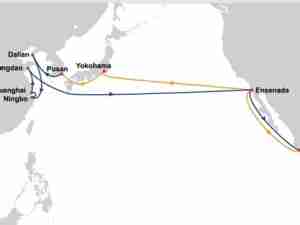Australian Storms May Crimp Coking Coal Supply, Stem Price Slide
By: | Dec 15 2016 at 03:00 PM | Intermodal | Maritime
The road back down for this year’s best-performing commodity may be bumpy.
While spot prices for coking coal have dropped about 16 percent this month from a record high above $300 a ton, possible heavy rain and flooding in Australia over the next few months may stall, or even reverse, the decline. The region is forecast to see an above-average number of tropical cyclones this season and disruptions may blunt the impact of rising output from China, the world’s biggest producer, which reached the highest in a year last month.
China’s effort to curb production helped to tighten coal supply, leading to a near quadrupling of the spot metallurgical price this year and making it the best performing commodity in 2016. The surge has been a boost to miners, with recent contract negotiations between producers and Japanese steelmakers resulting in the fourth quarterly gain and the highest accord since 2011.
“The industry remains vulnerable to a weather event in the next couple of months,” said Daniel Morgan, an analyst with UBS Group AG in Sydney. “I don’t think we’re going to see a rapid price decline in the near-term because supply is still tight and there is an Australian wet season to navigate.”
Spot hard coking coal was unchanged at $260.50 a ton on Thursday, according to data from The Steel Index. Prices have slipped from $308.80 a ton reached last month, a record for the gauge that started in January 2013. They opened the year just below $80.
China’s output of coking and thermal coal in November increased by 13 percent from the previous month as the nation loosened its production policy. While miners boost supply ahead of winter for power generation, Macquarie Group estimates that restrictions have been lifted on about 55 percent of lost metallurgical coal production capacity.
Below $200
Heavy rains and flooding from cyclones have previously swamped mines and washed away rail tracks in eastern Australia, the world’s biggest exporter of coking coal. Quarterly contract prices surged to a record $330 a ton in early 2011 after a similar event curbed supply. The season typically runs from November to April and sees an average 11 cyclones.
“To see where prices are going next, we are focused the most on the weather on Australia’s east coast,” Kanji Nishiura, the head of Mitsubishi Corp.’s metals and coal business, said in an interview in Tokyo on Tuesday. Mitsubishi and BHP Billiton Ltd. are joint partners in BHP Billiton Mitsubishi Alliance, or BMA, the world’s biggest shipper of metallurgical coal.
Once Australia’s weather calms, coking coal is seen easing to below $200 a ton, with Morgan Stanley predicting in a report this week an average of $183 next year. Macquarie forecasts prices will fall toward $175. The bank said in a note dated Dec. 12 that it remains tough to predict how quickly this will happen given the large size of the Chinese mining industry and the difficulty for the government to finely calibrate it.






